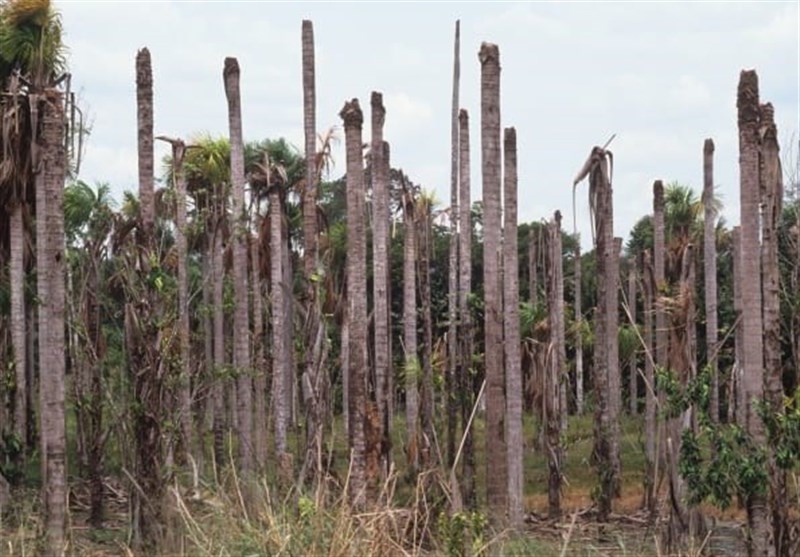Climate Change Driving Widespread Forest Death
TEHRAN (Tasnim) – Rising temperatures, deforestation, development and climate-induced disasters are transforming forests across the world as more frequent and severe droughts, wildfires and disease outbreaks destroy trees.
In a new report published in Science magazine, researchers warn that climate change is accelerating the death of trees, stunting their growth and making forests across the world younger and shorter, CNBC reported.
“This trend is likely to continue with climate warming,” said Nate McDowell, a scientist at Pacific Northwest National Laboratory and an author of the report.
“A future planet with fewer large, old forests will be very different than what we have grown accustomed to,” McDowell said. “Older forests often host much higher biodiversity than young forests and they store more carbon than young forests.”
Forests not only have less capacity to store carbon dioxide released by burning fossil fuels but are also unable to host certain species that normally reside there, the researcher said, which harms the role they play in mitigating global warming.
Eighty percent of the world’s land-based species live in forests, according to the World Wildlife Fund. Widespread tree mortality and deforestation has disrupted the habitats of now critically endangered animals like the Sumatran tiger and the orangutan.
The Amazon rainforest, which has been decimated by cattle ranching and wildfires, is the biggest deforestation front in the world with more than 20% of the forest already destroyed.
Research shows that carbon dioxide emissions are already nine times as high in the eastern part of the Amazon versus the still relatively thriving western region.
The climate that drives deforestation will likely accelerate and alter the habitats of plants and animals, according to McDowell. And hotter temperatures stunt the photosynthesis process, causing less tree growth and regeneration and a higher mortality rate.
“Increasing rates of tree mortality driven by climate and land-use change — combined with uncertainty in the mix of species that will form the next generation — pose big challenges for conservationists and forest managers alike,” said Tom Pugh, a scientist at the Birmingham Institute of Forest Research and an author of the report.
The wildfires that have destroyed trees and wildlife across the world — from Australia to Siberia to Brazil — are leaving behind scorched earth less capable of holding new life. Plant growth after fires has slowed or been absent due to rising temperatures.
Disease outbreaks from insects and fungi are also on the rise. In tropical forests, vines that use other plants as host structures are choking trees to death, researchers said.
The carbon dioxide storage that is lost to invasive insects every year in forests is equivalent to the emissions from 5 million vehicles, according to one study.
“Over the last hundred years we’ve lost a lot of old forests,” McDowell said. “And they’ve been replaced in part by non-forests and in part by young forests. This has consequences on biodiversity, climate mitigation and forestry.”
“Reductions in average forest age and height are already happening and they’re likely to continue to happen,” McDowell said.






